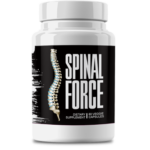This Village-Made Chinese Pain Reliever Eliminates Back And Joint Pain!
10 Effective Treatments for Menopause and Joint Pain Relief

Introduction: Understanding Menopause and Joint Pain
What is Menopause?
Menopause is a natural biological process that signifies the end of a woman's reproductive years. Typically occurring between the ages of 45 and 55, menopause is marked by the cessation of menstrual cycles for 12 consecutive months. This transition is accompanied by a variety of physical and emotional changes, including hot flashes, mood swings, and sleep disturbances. The hormonal fluctuations during menopause, particularly the decline in estrogen levels, can lead to several health issues, one of which is joint pain. Understanding menopause is crucial for effectively managing its symptoms and maintaining overall well-being.
The Link Between Menopause and Joint Pain
The connection between menopause and joint pain is primarily attributed to the decrease in estrogen levels. Estrogen plays a significant role in maintaining joint and bone health by regulating inflammation and promoting the production of collagen, a protein essential for joint elasticity. With reduced estrogen, women may experience increased joint stiffness, swelling, and pain. This condition, often referred to as menopausal arthritis, can affect various joints, including the knees, hips, and hands. Addressing joint pain during menopause is essential for improving quality of life and preventing further complications.
Importance of Treatment
Treating menopause-related joint pain is vital for several reasons. Firstly, it enhances daily functioning and mobility, allowing women to continue their regular activities without discomfort. Secondly, effective management of joint pain can prevent the development of more severe conditions such as osteoarthritis. Lastly, addressing joint pain can improve mental health by reducing stress and anxiety associated with chronic pain. A comprehensive treatment plan that includes lifestyle changes, medical interventions, and alternative therapies can provide significant relief and promote long-term joint health.
Hormone Replacement Therapy (HRT)
Benefits of HRT
Hormone Replacement Therapy (HRT) is a common treatment for managing menopause symptoms, including joint pain. HRT involves supplementing the body with estrogen and sometimes progesterone to replace the hormones that are no longer produced in adequate amounts. The primary benefit of HRT is its ability to alleviate various menopausal symptoms such as hot flashes, night sweats, and mood swings. Additionally, HRT can significantly reduce joint pain and stiffness, improving overall joint function. By restoring hormonal balance, HRT helps maintain bone density and joint health, making it an effective treatment option for many women.
Risks and Considerations
While HRT offers numerous benefits, it is essential to consider the potential risks and side effects. Some studies have linked HRT to an increased risk of certain conditions, including breast cancer, blood clots, and stroke. Therefore, it is crucial to discuss the risks and benefits with a healthcare provider to determine if HRT is suitable for you. Factors such as age, medical history, and the severity of menopause symptoms should be taken into account. Regular monitoring and follow-up appointments are necessary to ensure the safe and effective use of HRT for managing menopause and joint pain.
How HRT Alleviates Joint Pain
HRT alleviates joint pain by replenishing estrogen levels, which play a critical role in joint health. Estrogen helps reduce inflammation and promotes the production of collagen, which is essential for maintaining joint elasticity and strength. By restoring hormonal balance, HRT can decrease joint stiffness, swelling, and discomfort. Additionally, HRT can improve overall bone density, reducing the risk of osteoporosis and fractures. For many women, HRT provides significant relief from joint pain and enhances their overall quality of life during menopause. However, it is essential to use HRT under medical supervision to ensure its safety and effectiveness.
Lifestyle Modifications
Importance of Regular Exercise
Regular exercise is crucial for managing joint pain during menopause. Physical activity helps maintain joint flexibility, strengthen muscles, and improve overall mobility. Weight-bearing exercises such as walking, jogging, and strength training are particularly beneficial for bone health. Additionally, low-impact activities like swimming and yoga can reduce joint stress while enhancing flexibility and balance. Exercise also aids in weight management, reducing the strain on joints. Incorporating a variety of exercises into your routine can provide comprehensive benefits, making it easier to manage joint pain and improve overall well-being during menopause.
Diet Changes for Joint Health
Diet plays a vital role in maintaining joint health during menopause. Consuming a balanced diet rich in anti-inflammatory foods can help reduce joint pain and inflammation. Incorporate plenty of fruits, vegetables, whole grains, and lean proteins into your meals. Foods high in omega-3 fatty acids, such as fatty fish, walnuts, and flaxseeds, have anti-inflammatory properties that can benefit joint health. Additionally, ensure adequate intake of calcium and vitamin D to support bone density. Avoid processed foods, sugary snacks, and excessive caffeine, as they can exacerbate inflammation and joint pain.
Stress Management Techniques
Managing stress is essential for alleviating joint pain during menopause. Chronic stress can lead to increased inflammation and muscle tension, worsening joint discomfort. Incorporate stress-reducing techniques such as deep breathing exercises, meditation, and mindfulness into your daily routine. Engaging in hobbies, spending time with loved ones, and practicing relaxation techniques can also help manage stress levels. Regular physical activity, adequate sleep, and a healthy diet further contribute to stress reduction. By effectively managing stress, you can alleviate joint pain and improve overall well-being during menopause.
Natural Supplements
Omega-3 Fatty Acids
Omega-3 fatty acids are known for their anti-inflammatory properties and can be beneficial for managing joint pain during menopause. These essential fats are found in fatty fish, flaxseeds, chia seeds, and walnuts. Omega-3 supplements, such as fish oil capsules, can also be taken to ensure adequate intake. By reducing inflammation, omega-3 fatty acids help alleviate joint stiffness and pain, improving overall joint function. Consult with a healthcare provider before starting any new supplement to ensure it is appropriate for your individual needs and to determine the correct dosage.
Glucosamine and Chondroitin
Glucosamine and chondroitin are natural compounds found in cartilage and are commonly used as supplements to support joint health. These supplements can help reduce joint pain and improve mobility by promoting the repair and maintenance of cartilage. Glucosamine and chondroitin supplements are available in various forms, including tablets, capsules, and powders. While some studies suggest these supplements can provide significant relief from joint pain, it is essential to consult with a healthcare provider before starting any new supplement regimen to ensure it is safe and effective for your needs.
Herbal Remedies
Herbal remedies can be a natural and effective way to manage joint pain during menopause. Some popular herbs for joint health include turmeric, ginger, and boswellia. Turmeric contains curcumin, a compound with potent anti-inflammatory properties. Ginger also has anti-inflammatory effects and can help reduce joint pain and stiffness. Boswellia, or Indian frankincense, is known for its ability to improve joint function and reduce inflammation. These herbs can be consumed as supplements, teas, or incorporated into meals. Always consult with a healthcare provider before using herbal remedies to ensure they are safe and appropriate for your condition.
Topical Treatments
Benefits of Topical Creams
Topical creams offer a convenient and effective way to manage joint pain during menopause. These creams are applied directly to the affected area, providing targeted relief from pain and inflammation. Topical treatments can include ingredients such as menthol, capsaicin, and non-steroidal anti-inflammatory drugs (NSAIDs). The primary benefit of topical creams is their ability to deliver relief without the systemic side effects associated with oral medications. Additionally, they can be used as needed, making them a flexible option for managing joint pain. Incorporating topical treatments into your pain management routine can provide significant relief and improve joint function.
Types of Topical Analgesics
There are several types of topical analgesics available for managing joint pain during menopause. Menthol-based creams provide a cooling sensation that can temporarily relieve pain and discomfort. Capsaicin creams, derived from chili peppers, work by desensitizing nerve receptors and reducing pain signals. NSAID creams, such as those containing diclofenac, reduce inflammation and provide pain relief. Other options include lidocaine patches and herbal-based creams. It is essential to choose a topical analgesic that suits your specific needs and to follow the application instructions carefully for optimal results.
Application Tips
Proper application of topical treatments is crucial for achieving the best results. Start by cleaning the affected area to remove any dirt or oils that may interfere with absorption. Apply a small amount of the cream or gel to the area, gently massaging it into the skin. Follow the recommended dosage and application frequency provided on the product label or by your healthcare provider. Avoid using topical treatments on broken or irritated skin, and wash your hands thoroughly after application to prevent accidental contact with sensitive areas such as the eyes. Consistent use can provide effective relief from joint pain.
Physical Therapy
Role of Physical Therapy in Joint Pain Relief
Physical therapy plays a crucial role in managing joint pain during menopause. A physical therapist can design a personalized exercise program that targets specific joints, improves flexibility, and strengthens muscles. These exercises can help reduce pain, enhance mobility, and prevent further joint damage. Physical therapy also includes techniques such as manual therapy, heat and cold therapy, and ultrasound therapy, which can provide additional pain relief and promote healing. Regular sessions with a physical therapist can significantly improve joint function and overall quality of life for women experiencing menopause-related joint pain.
Common Physical Therapy Techniques
Several physical therapy techniques are commonly used to manage joint pain during menopause. Manual therapy involves hands-on techniques such as massage, joint mobilization, and manipulation to reduce pain and improve joint function. Heat and cold therapy can help alleviate pain and inflammation by increasing blood flow and reducing swelling. Ultrasound therapy uses sound waves to promote tissue healing and reduce pain. Stretching and strengthening exercises are also essential components of physical therapy, helping to improve flexibility, balance, and muscle strength. A combination of these techniques can provide comprehensive relief from joint pain.
Finding a Qualified Physical Therapist
Finding a qualified physical therapist is essential for effective joint pain management during menopause. Look for a licensed physical therapist with experience in treating joint pain and menopausal symptoms. You can ask for recommendations from your healthcare provider, friends, or family members. Additionally, check online reviews and professional associations to find reputable therapists in your area. During your initial consultation, discuss your symptoms, medical history, and treatment goals with the therapist. A good physical therapist will create a personalized treatment plan tailored to your needs and provide ongoing support throughout your therapy sessions.
Prescription Medications
Non-Steroidal Anti-Inflammatory Drugs (NSAIDs)
Non-Steroidal Anti-Inflammatory Drugs (NSAIDs) are commonly prescribed for managing joint pain during menopause. These medications, such as ibuprofen and naproxen, work by reducing inflammation and relieving pain. NSAIDs can be highly effective for short-term pain relief and are available in both over-the-counter and prescription forms. However, long-term use of NSAIDs can lead to side effects such as gastrointestinal issues, kidney problems, and increased risk of cardiovascular events. It is essential to use NSAIDs under the guidance of a healthcare provider and to follow the recommended dosage to minimize potential risks.
Corticosteroids
Corticosteroids are powerful anti-inflammatory medications that can provide significant relief from joint pain during menopause. These medications can be administered orally, through injections, or topically. Corticosteroid injections are particularly effective for reducing inflammation and pain in specific joints. However, long-term use of corticosteroids can lead to side effects such as weakened bones, increased risk of infections, and hormonal imbalances. It is crucial to use corticosteroids under the supervision of a healthcare provider and to follow their recommendations for dosage and duration of treatment to ensure safety and effectiveness.
Disease-Modifying Antirheumatic Drugs (DMARDs)
Disease-Modifying Antirheumatic Drugs (DMARDs) are used to treat chronic inflammatory conditions such as rheumatoid arthritis, which can be exacerbated during menopause. DMARDs work by suppressing the immune system and reducing inflammation, thereby slowing the progression of joint damage. Common DMARDs include methotrexate, sulfasalazine, and hydroxychloroquine. While these medications can provide significant relief from joint pain and improve joint function, they also carry potential risks and side effects, such as liver toxicity and increased susceptibility to infections. Regular monitoring and close collaboration with a healthcare provider are essential when using DMARDs.
Alternative Therapies
Acupuncture
Acupuncture is an ancient Chinese therapy that involves inserting thin needles into specific points on the body to relieve pain and promote healing. This alternative therapy can be effective for managing joint pain during menopause by stimulating the release of endorphins, the body's natural painkillers, and improving blood flow to the affected areas. Acupuncture can also help reduce inflammation and muscle tension, providing additional relief from joint discomfort. It is essential to seek treatment from a licensed and experienced acupuncturist to ensure safety and effectiveness. Many women find acupuncture to be a valuable addition to their joint pain management plan.
Chiropractic Care
Chiropractic care focuses on the diagnosis and treatment of musculoskeletal disorders, including joint pain. Chiropractors use hands-on techniques such as spinal manipulation, joint adjustments, and soft tissue therapy to improve joint function and alleviate pain. Chiropractic care can be particularly beneficial for women experiencing joint pain during menopause, as it helps restore alignment and balance to the body. Regular sessions with a chiropractor can enhance mobility, reduce inflammation, and promote overall joint health. It is essential to choose a licensed and experienced chiropractor to ensure safe and effective treatment for managing joint pain.
Yoga and Meditation
Yoga and meditation are excellent alternative therapies for managing joint pain during menopause. Yoga combines physical postures, breathing exercises, and relaxation techniques to improve flexibility, strength, and balance. Regular practice of yoga can help reduce joint stiffness, alleviate pain, and enhance overall mobility. Meditation, on the other hand, focuses on mindfulness and stress reduction, which can indirectly benefit joint health by reducing inflammation and muscle tension. Incorporating yoga and meditation into your daily routine can provide comprehensive benefits for joint pain management and overall well-being during menopause.
Conclusion: Combining Treatments for Optimal Relief
Personalized Treatment Plans
Combining various treatments is often the most effective approach to managing joint pain during menopause. A personalized treatment plan tailored to your specific needs and preferences can provide optimal relief. This plan may include a combination of medical interventions, lifestyle modifications, natural supplements, and alternative therapies. Working closely with your healthcare provider, physical therapist, and other specialists can help you develop a comprehensive and effective treatment strategy. Regularly reassessing and adjusting your plan based on your progress and changing needs ensures that you continue to achieve the best possible outcomes for joint pain relief.
Monitoring Progress
Monitoring your progress is essential for effective joint pain management during menopause. Keep a journal to track your symptoms, treatments, and any changes in your condition. Regular follow-up appointments with your healthcare provider and other specialists can help assess the effectiveness of your treatment plan and make necessary adjustments. Monitoring progress allows you to identify any potential issues early on and address them promptly. Additionally, it helps you stay motivated and committed to your treatment plan, ensuring that you continue to achieve the best possible outcomes for joint pain relief and overall well-being.
Long-Term Strategies for Joint Health
Adopting long-term strategies for joint health is crucial for managing menopause-related joint pain and ensuring overall well-being. Maintain a healthy lifestyle by incorporating regular exercise, a balanced diet, and stress management techniques into your daily routine. Continue using natural supplements, topical treatments, and alternative therapies as needed to support joint health. Regular check-ups with your healthcare provider and other specialists can help monitor your condition and prevent potential complications. By staying proactive and committed to your joint health, you can enjoy a better quality of life and minimize the impact of menopause-related joint pain.








